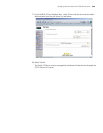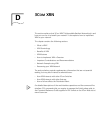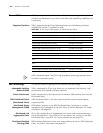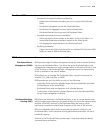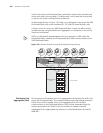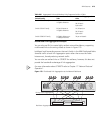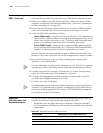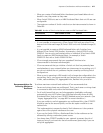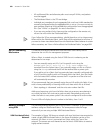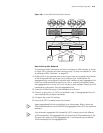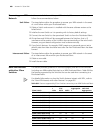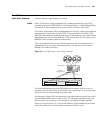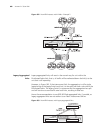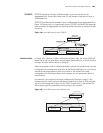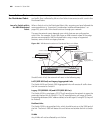
Important Considerations and Recommendations 677
n When you create a Distributed Fabric the relevant port-based tables do not
double in size, they remain as they were.
n When Switch 5500 units are in an XRN Distributed Fabric their unit IDs are user
configurable.
n The maximum number of Switch units that can be interconnected is shown in
Table 693.
n It is not possible to interconnect a 3Com Switch 5500 with any other 3Com
device or mix Enhanced Image (EI) Switch 5500 units with Standard Image (SI)
units.
n It is not possible to create an XRN Distributed Fabric with Switches from
different 3Com Switch 5500 families, for example, a Switch 5500 EI with a
5500G-EI. You can only use Switches within an individual 3Com Switch 5500
family to create an XRN Distributed Fabric, for example, a Switch
5500-EI 52-Port with a Switch 5500-EI 28-Port.
n 3Com strongly recommends that you upgrade all Switches to be
interconnected to the latest software agent.
n 3Com recommends that you initialize a Switch unit that has previously been
used elsewhere in your network before you interconnect to an existing unit. If
you do not initialize the unit, problems may be caused by conflicting Switch
configurations.
n When a port is operating in XRN mode it will no longer be configurable in the
normal way, that is, you cannot control port features such as auto-negotiation,
VLANs, static addresses, STP, Aggregated Links, Resilient Links, and so on.
Recommendations for
Achieving Maximum
Resilience
To achieve maximum network-level resilience 3Com recommends that:
n Servers and wiring closets are multihomed. That is, each server or wiring closet
is connected to both units within the Distributed Fabric.
n On all multi-homed links you use link aggregation (preferably configured
automatically using LACP rather than configured manually) across an XRN
Distributed Fabric, and you have STP/RSTP enabled across your network. (See
“Legacy Aggregated Links” on page 682 for more information.)
If you are unable to use link aggregation on multihomed links, then STP/RSTP
should be used as the second option, and the last option would be to use
resilient links.
This implementation increases the level of fault tolerance as it also protects
against loss of the physical interfaces at the core.
n If you use the Switch 5500 in a Distributed Fabric further resilience can be
achieved by utilizing a redundant power source.
n You always have STP/RSTP enabled on your network to prevent the risk of
loops occurring if you have links that are multihomed, particularly if you are
using link aggregation.
Table 693 Number of Switch units that can create an XRN Distributed Fabric
Switch Model Max number of units Method
Switch 5500-EI Family 8 Loop
Switch 5500G-EI Family 8 Loop



